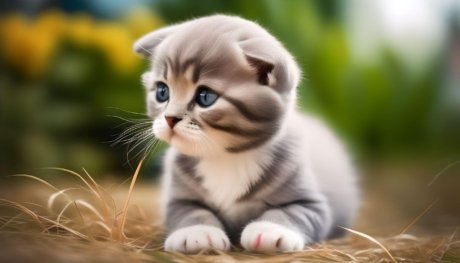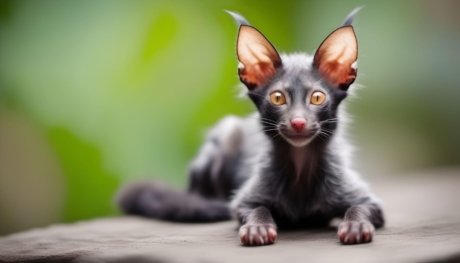60% Off – Buy Cheapest Cat Food | Certified Healthy Food
As a proud owner of a feline friend, you know how important it is to provide them with high-quality, nutritious food. After all, cats are obligate carnivores, which means they require specific nutrients found only in meat to thrive. But with so many different brands and types of cat food available, it can be difficult to know what to choose.
In this article, we’ll cover everything you need to know about cat food, from understanding your cat’s nutritional needs to selecting the best food for their specific requirements.
Understanding Your Cat’s Nutritional Needs
Before we dive into the specifics of cat food, it’s important to understand your cat’s nutritional needs. As obligate carnivores, cats require a diet that’s high in protein and fat, with minimal carbohydrates. Here are the key nutrients your cat needs:

1. Protein:
Cats require high-quality protein in their diet, which provides essential amino acids for building and maintaining strong muscles, organs, and tissues. Look for cat food that contains at least 25% protein, ideally sourced from animal-based ingredients like chicken, fish, or beef.
2. Fat:
Fats are an essential source of energy for cats and also aid in the absorption of fat-soluble vitamins. Look for cat food that contains at least 9% fat, ideally from animal sources like chicken fat or fish oil.
3. Carbohydrates:
While cats don’t require carbohydrates in their diet, small amounts can provide a source of energy and fiber. Look for cat food that contains minimal amounts of carbohydrates, ideally from sources like sweet potato or pea fiber.

4. Vitamins and minerals:
Vitamin A, vitamin E, taurine, and calcium are just a few of the vitamins and minerals that cats need to maintain good health overall. Cat food with a balanced blend of important vitamins and minerals is what you should seek out.
Types of Cat Food
Now that you understand your cat’s nutritional needs, let’s take a look at the different types of cat-food available.
1. Dry cat food:
Due to its convenience and long shelf life, dry cat food, sometimes referred to as kibble, is a popular choice. In addition to other vitamins and minerals, it often includes a combination of meat-based protein, fat, and carbohydrates. Even if some dry cat food can be of a high calibre, it’s important to carefully check the label to make sure it satisfies your cat’s nutritional needs.
Here are some recommended Dry cat food, you can buy:
2. Wet cat food:
A moist alternative that can offer more moisture and protein than dry food is wet cat food, sometimes referred to as canned food. It typically has more fat and protein from meat as well as additional vitamins and minerals. For cats who need additional moisture in their diet, such as those with kidney or urinary tract problems, wet cat-food can be an excellent option.
Here are some recommended Wet cat-food, you can buy:
3. Raw cat food:
The contentious choice of feeding your cat raw meat, bones, and organs is known as “raw cat food.” While some proponents of raw feeding contend that it is healthier and more natural, others raise concerns about the dangers of bacterial infection and nutritional imbalances.
Here are some recommended Raw cat-food, you can buy:
4. Prescription cat food:
A customised diet created to fulfil the precise nutritional needs of cats with medical issues is known as prescription cat chow. For example, a cat with kidney problems might need to eat a diet low in protein and phosphorus. Only a veterinarian can prescribe cat food, and only under their direction can it be used.
Here are some recommended Prescription cat-food, you can buy:
Selecting the Best Cat Food
When it comes to selecting the best cat-food for your furry friend, there are a few key factors to consider.
Video Credit- Cat Food: Jaw-Dropping Facts
1. Read the label:
To choose cat food, carefully read the label in the first step. Look for cat food with a little number of carbohydrates and lots of high-quality fat and protein. Avoid giving your cat-food that contains maize, wheat or soy, as these are low-quality fillers and have little nutritional value.
2. Consider your cat’s age and activity level:
Cats have different nutritional requirements depending on their age and activity level. For example, kittens require more protein and fat to support their growth and development, while senior cats may benefit from a diet that’s lower in calories to help maintain a healthy weight. Consider your cat’s individual needs when selecting cat-food.
3. Look for AAFCO approval:
The Association of American Feed Control Officials (AAFCO) is an organization that sets standards for pet food in the United States. Look for cat food that has been approved by AAFCO, which means it meets certain nutritional guidelines.
4. Consider your budget:
Even though premium cat food can be pricey, it’s important to invest in your cat’s wellbeing. However, there are cheap solutions that nonetheless offer sufficient nourishment. When choosing cat food, keep your budget in mind and search for products that offer good value for your money.
5. Monitor your cat’s health:
Monitoring your cat’s health and wellbeing is important once you’ve chosen a cat food. Look into switching to a different brand of cat-food or consulting with your veterinarian if your cat exhibits any adverse reactions or health problems.

Conclusion:
Providing your cat with high-quality, nutritious food is essential for their overall health and wellbeing. As an obligate carnivores, cats require a diet that’s high in protein and fat, with minimal carbohydrates. There are several types of cat food available, including dry food, wet food, raw food, and prescription food. When selecting cat-food, it’s important to read the label, consider your cat’s age and activity level, look for AAFCO approval, consider your budget, and monitor your cat’s health. By taking these factors into account, you can ensure that your cat receives the best possible nutrition to support a long and healthy life.
Frequently Asked Questions on Cat Food:
-
Is it important to read the label on cat food?
Yes, it’s important to check the cat food label to be sure it has all the nutrients your cat needs. Look for sources of protein and fat of the highest calibre that contain little or no carbohydrates and no fillers or byproducts.
-
Can I feed my cat a vegetarian or vegan diet?
No, cats are obligate carnivores and require specific nutrients that are only found in animal-based protein. Feeding a vegetarian or vegan diet can lead to nutritional deficiencies and health problems.
-
Should I feed my cat wet or dry food?
Depending on your cat’s specific requirements, both wet and dry food can be suitable choices. While dry food is more practical and has a longer shelf life, wet food offers more moisture and may be advantageous for cats with kidney or urinary tract problems.
-
What is AAFCO approval?
AAFCO approval means that the cat food meets certain nutritional guidelines set by the Association of American Feed Control Officials. Look for cat-food that has been AAFCO approved to ensure that it provides adequate nutrition.
-
How can I tell if my cat is thriving on their food?
A healthy cat should have a gleaming coat, clear eyes, and plenty of activity. If your cat is having digestive or health concerns, it could be a sign that their food isn’t supplying enough nourishment. If you are concerned about your cat’s health, contact your veterinarian.
Recommended:
Scientific Name of Dog | The Evolutionary History of Dogs
1000 Rupee Pomeranian Dog Puppy Price | Monthly Cost, Care Tips





























